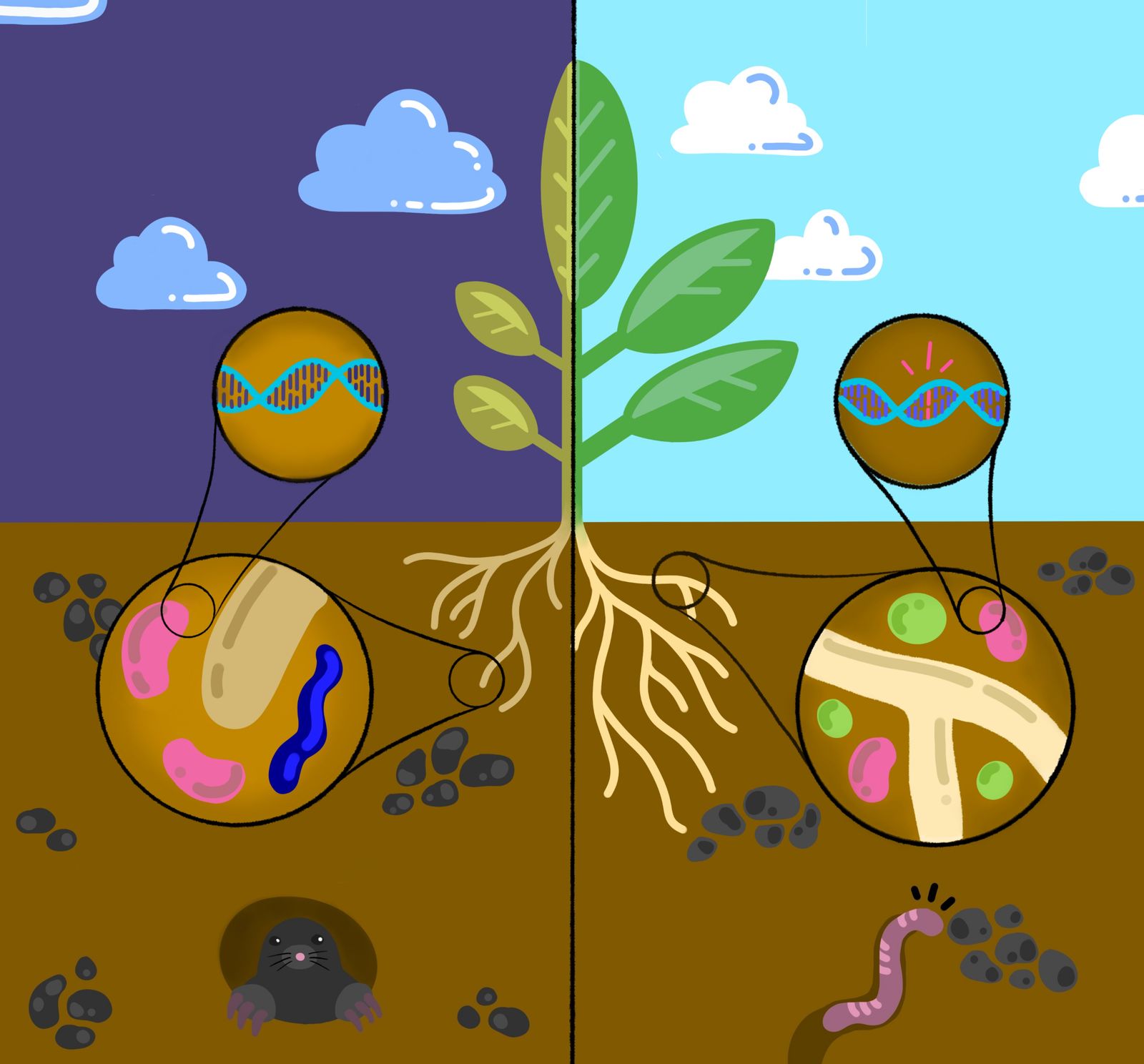How bacteria and plants become friends
Almost all living beings, including you and me, participate in reciprocal interactions with the microorganisms in our environment. Collectively, these microorganisms are also known as the microbiota and play important roles for host health, for instance in our digestive system. Plants, including crop plants such as wheat, rice and soy, have a microbiota as well. Accordingly, the plant-associated microbiota fulfils numerous beneficial functions. For instance, root-associated bacteria can mobilize mineral nutrients from the surrounding soil (Planter's Punch Milena Malisic), and thereby improve growth of a plant. That presents a great opportunity, as it would allow farmers to increase the amount of food produced per area of cultivated land. Because of these well-known beneficial functions, farmers already apply certain bacteria to their fields to boost the health of their crop plants. However, the exact mechanisms by which bacteria colonize the roots of plants are not completely understood. Recently, researchers from the Max-Planck-Institute for Plant Breeding Research had a closer look at this colonization process. Interestingly, they found that the root-colonizing bacteria have a strong preference for an already-known plant - like an “old friend”. But this also implies that bacteria that are naturally associated with roots of one plant species, for example rice, are potentially bad colonizers of the roots of a different plant such as soy.

During my doctoral thesis, I am trying to investigate this phenomenon of differential preferences of bacteria. My main research question is: Which genes give bacteria the ability to adapt to a new plant? To answer this question, I am using experimental evolution. That means, I bring together bacteria and plants that are not “old friends” and wait until they become friends, when the evolved preferentially colonize the new host plant. Then, I will compare the ancestral bacteria, that do not compete for the roots of their new host plant, with the evolved bacteria, and identify genes that changed throughout the experiment. This will give me a list of candidate genes that could help us to explain the mechanisms by which bacteria adapt to new plants. In the long-run, this knowledge could be used to tailor “probiotic cocktails” towards a specific crop plant and thereby, potentially increase the yield.
German proof-reading and non-scientific advice: Paul Kajdewicz, MPIPZ (RGO)
English proof-reading: Charles Copeland, MPIPZ (PSL)
Artwork: Sydney Balkenhol, Institute for Metabolic Physiology, HHU
Planter's Punch
Under the heading Planter’s Punch we present each month one special aspect of the CEPLAS research programme. All contributions are prepared by our young researchers.
About the author

Niklas Kiel is a PhD student in the group of Ruben Garrido-Oter at the Max-Planck-Institute for plant breeding research. The group explores ecological and evolutionary aspects of plant-microbe interactions using computational methods as well as state-of-the-art sequencing technology. Niklas’ project is centred around the question, how bacteria adapt to a new host plant. Ultimately, he aims to elucidate the underlying genetic mechanisms of such adaptive processes.
Further reading
Wippel, Kathrin, et al. Host preference and invasiveness of commensal bacteria in the Lotus and Arabidopsis root microbiota. Nature microbiology 6.9 (2021): 1150-1162.
Li, Erqin, et al. Rapid evolution of bacterial mutualism in the plant rhizosphere. Nature Communications 12.1 (2021): 1-13.